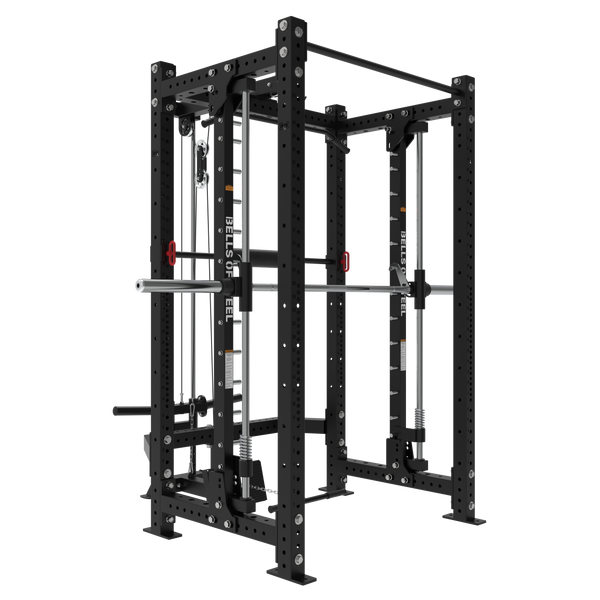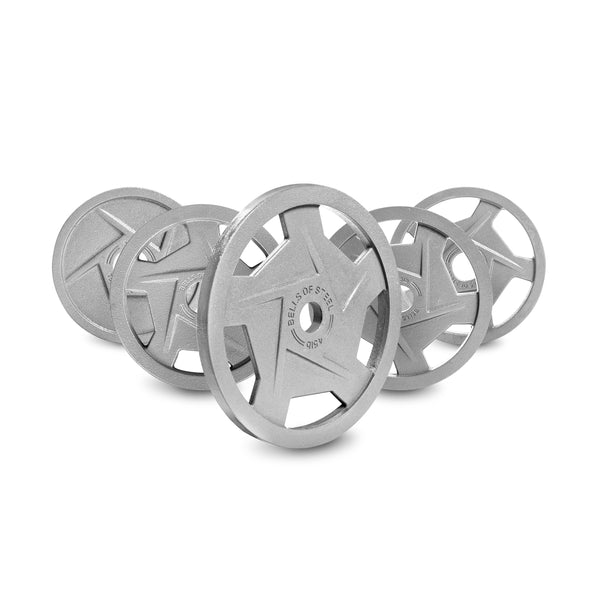Ah, the elusive front rack position—the foundation of a good front squat and the secret weapon of a clean and jerk that actually feels clean.
But if you’ve ever felt like your wrists are being twisted like pretzels or struggled to keep your elbows high enough, you’re not alone. Front rack mobility can be challenging, especially if you’re not blessed with naturally flexible wrists, shoulders, and lats. Fortunately, with the right moves, you can unlock better mobility and stop front-racking in discomfort.
Let’s dive into what front rack mobility is, why it’s so crucial, and how to improve it!
What is the Front Rack Position?
The front rack position is the starting point for exercises like the front squat and the clean. It involves holding the barbell across your shoulders, with your elbows up high and wrists slightly bent. Ideally, the bar should rest comfortably on the front of your shoulders, not bearing down on your wrists or hands.
Exercises that Use the Front Rack Position
- Front Squat – Places the load on your anterior muscles (quads) and core, rather than the posterior chain.
- Clean and Jerk – An Olympic lift where a strong front rack ensures you can catch and stabilize the bar after the clean.
- Lunges – Front rack lunges challenge your stability, core, and balance.
Why is Front Rack Mobility So Challenging?
The front rack position requires flexibility in multiple areas: wrists, forearms, triceps, shoulders, and lats. It also demands thoracic spine (upper back) mobility to keep the chest up and prevent the bar from collapsing forward. Without enough range of motion in these areas, maintaining a solid front rack can feel like wrestling with a steel beam.
8 Tips for Improving Front Rack Mobility
1. Warm Up Those Wrists
Let’s start with the wrists—these small joints work hard to support the bar. Do wrist circles and flexion/extension stretches before loading up a barbell. You can also try placing your hands on a bench, fingers facing back, and gently lean into them for a deep stretch.
Pro Tip: If wrist pain persists, consider using a more open grip (fingers under the bar rather than gripping it fully) to reduce strain.
2. Loosen Up the Lats
Tight lats are one of the biggest culprits for poor front rack positioning. The tighter they are, the harder it is to bring your elbows up. Use a foam roller on your lats by lying on your side, positioning the roller under your armpit, and rolling slowly. Pair this with overhead stretches like the classic doorway stretch or a lat stretch with a resistance band.
3. Improve Thoracic Spine Mobility
Thoracic (upper back) mobility plays a massive role in maintaining a strong front rack position. Try thoracic extensions over a foam roller: lie on your back with the roller positioned under your upper back, and slowly extend over it. You can also try “cat-cow” yoga poses or thoracic rotations to open up the back.
4. Practice Shoulder Flexibility
The shoulders are key players in the front rack position. Regularly stretch the front delts and work on shoulder flexibility with exercises like wall angels or banded shoulder stretches. Face a wall, and slowly move your arms up and down in a "Y" or “W” position while keeping your lower back pressed into the wall.
Pro Tip: Shoulder dislocates with a resistance band can also work wonders to increase shoulder flexibility.
5. Master the Triceps Stretch
The triceps can also limit your elbow position. For an effective triceps stretch, grab one elbow and pull it behind your head, holding for at least 20 seconds. You can intensify this stretch by holding a light dumbbell in your hand. Repeat on both sides, making sure to breathe through the stretch.
6. Banded Front Rack Stretch
Using a resistance band to work on your front rack mobility can be a game-changer. Attach the band to a rack at shoulder height, loop it around your elbow, and step back slightly. Allow the band to pull your elbow forward while keeping your palm facing up. This stretch helps open up the shoulder and creates space in the joint.
7. Use a Barbell Front Rack Stretch
Place an unloaded barbell on a rack at about chest height. Place your fingers under the bar as if you’re setting up for a front squat, and walk your elbows up. Push your elbows forward while keeping a strong grip on the bar to stretch your wrists, shoulders, and lats all at once.
8. Strengthen Your Core
A weak core can make it difficult to support the weight in a front rack position. Incorporate core exercises like planks, dead bugs, and Russian twists into your routine. A strong core keeps you upright and prevents the dreaded “elbows drop” that can happen when your upper body fatigues.
FAQs About Front Rack Mobility
Q: Why do my wrists hurt in the front rack position?
A: Wrist pain is a common issue in the front rack position, usually due to a lack of wrist flexibility or an overly tight grip. Try to focus on stretching your wrists regularly and consider using a lighter grip (allowing the bar to rest on your fingertips rather than holding it tightly).
Q: How often should I work on my front rack mobility?
A: Consistency is key! Aim to incorporate front rack mobility exercises into your routine at least three times a week, especially if you’re doing front squats or cleans regularly.
Q: Can I do front squats without good front rack mobility?
A: It’s possible, but it won’t be comfortable or effective long-term. Poor front rack mobility puts unnecessary strain on your wrists and elbows, which can lead to injury. Take time to work on mobility—your joints will thank you. If you have underlying images or mobility issues, you can also use a Safety Squat Bar rather than a front rack for squats.
Q: What if I can’t keep my elbows up?
A: Low elbows are usually a sign of limited shoulder, lat, or thoracic spine mobility. Use a mix of stretches and mobility drills targeting these areas to help bring those elbows up.
Conclusion: Embrace the Front Rack Life!
Improving front rack mobility can feel like a never-ending journey, but each stretch and drill is a step toward lifting nirvana. A mobile front rack position will enhance your performance, help prevent injuries, and make exercises like the front squat feel so much smoother.
Remember, a solid front rack is more than just flexible wrists; it’s a blend of wrist, shoulder, lat, and thoracic spine mobility. So, work these areas consistently, and soon, the only “front rack” problems you’ll have are deciding which weight to PR next.



